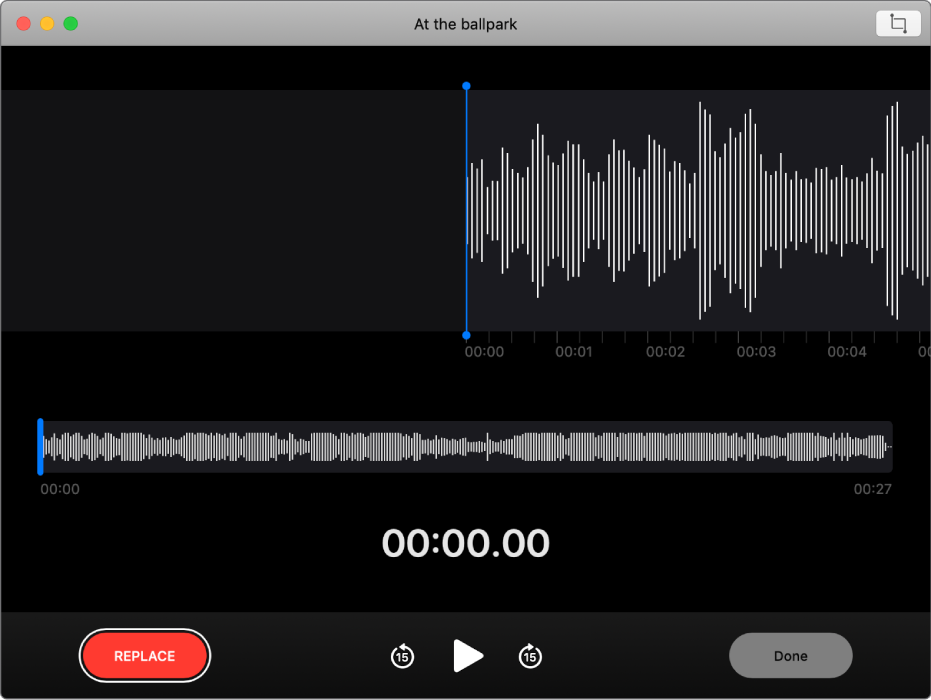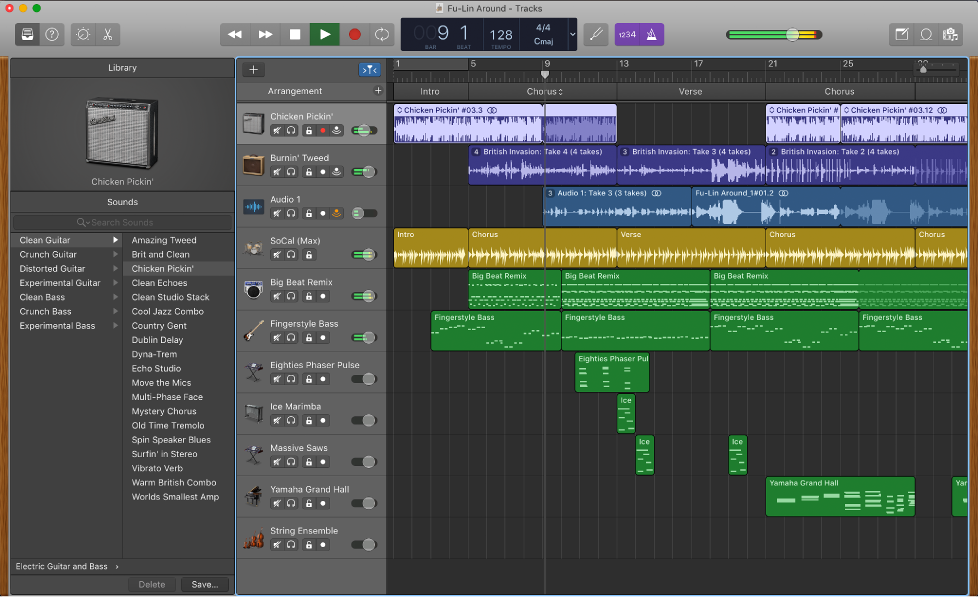Small Music Stuido App Mac
The decision to retire iTunes in favor of a standalone Mac Music app (alongside separate Podcast and TV apps) will please many of us, but it did leave a few unanswered questions.
- Small Music Studio App Machine
- Small Music Studio App Mac 2017
- Small Music Studio App Mac Download
- Small Music Studio App Mac Free
The Music app has replaced iTunes on the Mac! Find out how to use Music, how to buy tunes from the iTunes Store, how to import music from CD and other services, how to manage your music collection. For Mobile Music-Makers: MacBook Pro. If you need to be mobile, the MacBook Pro is a great choice. Just be prepared for fan noise. For Those Who Want The Best: Mac Pro. It isn’t cheap, but you’ll find the Mac Pro in most professional recording studios.
With Apple these days very focused on streaming music, what happens to music ripped from CD once we make the switch to the new Music app in macOS Catalina, for example … ?
ArsTechnicagot some brief answers from Apple. First, our iTunes libraries – with their mix of ripped, downloaded and streamed music – are safe in the new Mac Music app, and will continue to sync with the cloud.
Apple Music in macOS Catalina will import users’ existing music libraries from iTunes in their entirety, Apple says. That includes not just music purchased on iTunes, but rips from CDs, MP3s, and the like added from other sources.
Further, the existing feature that synced users’ non-iTunes files to the cloud will continue to work, and of course, users will still be able to buy songs from Apple. Apple is not turning Apple Music into a streaming-only experience. For the most part, the end of iTunes seems to be an end in name only: key features will be retained in the Music app.
Apple also revealed yesterday that syncing iOS devices like iPhones and iPads will now take place in Finder, rather than any of the new apps. However, if you were hoping this might mean simple drag-and-drop access to your devices, sadly this won’t be the case.
When you plug your iPhone, iPod, or iPad in, you’ll see it in the sidebar for Finder just like you would any external drive or USB stick.
But when you click it, you won’t just see a file system like you would with those accessories. Instead, you will be presented with an interface very similar to the one you’re used to in iTunes, with many (if not all) of the same features.

So expect the new Finder to look very much like the old iTunes when it comes to syncing.
ArsTechnica also confirmed that nothing changes for Windows users – they are stuck with iTunes.
Many people use iTunes to manage their media libraries in Windows—not just music, but videos and podcasts, too. Apple announced today that iTunes will be broken into multiple applications in macOS, but the company didn’t specify onstage what will happen to the same program in Windows.

The answer, it turns out, is not much. Apple says users of iTunes under Microsoft Windows will not see any changes. It won’t be broken up into several apps; it will work just like it does now. However, Apple did not provide any clarification about what support will be like for future features. The company simply says that Windows users will continue to have the same experience as before and that it is not announcing any plans to end support for iTunes in Windows.
Small Music Studio App Machine
The new Mac TV app will also offer the same functionality as an Apple TV 4K in terms of displaying content on a television (via an HDMI adapter), but you’ll need a 2018 or later Mac for Atmos support.
FTC: We use income earning auto affiliate links.More.
Setting up an Apple computer for audio is simpler than a Windows pc because Apple offers fewer options. but it’s still possible to end up with a system that doesn’t perform optimally. often it’s a case of not getting the machine configured correctly. the following guide will hopefully get you to a reasonable starting point for your Mac computer audio odyssey.
For me, the three most important aspects of a computer audio system are stability, reliability, and simplicity of operation. Sound quality comes after these three primary goals are met: ultimately it doesn’t matter how good your computer audio system can sound if you can’t get it to work.
Given my priorities, the principal goal of this guide won’t be the best performance. (John Quick talks about this in the following feature.) No, the goal here is to achieve a system that is going to deliver sound 99.9% of the time without having to screw around. Even a naïve user should be able to use a computer audio system almost as easily as a CD player.
Hardware
Which Apple computer you choose for computer audio will depend on several factors, but principally budget and portability. Portable Macs, whether MacBook Pro or Air, make great audio computers, especially if you want one system that you can take with you. A Mac Mini is less expensive initially, but it does require an external monitor and keyboard for full functionality. An iMac is also a good option and the monitor is built-in. Some folks (like me) even use a MacPro desktop machine for audio duties.
Nowadays, the Macs I see most often used for audio are the Mac Mini or a Mac portable. Mac Minis are the most popular “desktop” machine due to their size and price. Also a Mac Mini can be run “headless” after initial setup, without a monitor or keyboard via the “Remote” Smartphone app (a Mac portable can be used this way also, but the screen will remain active). Any Mac that supports the current or near-current operating system can be used for audio playback duties. Considerations such as whether you want portability are more easily quantifiable than whether one Mac model sounds better than another.

Apple offers all its computers with different memory and hard-drive configurations. You can order a Mac directly from Apple exactly the way you want it or you can purchase a barebones configuration and add your own memory and storage later. OtherWorld Computing sells all the necessary parts as well as step-by-step instructional videos on its site for installing memory, solid-state drives, and auxiliary hard drives for nearly every model Mac.
If you want to do an audio-only computer system, be aware that there are different levels of audio-only exclusivity. And there’s always a trade-off of ergonomics lost versus sonic benefits gained. Access to the Internet is not necessary to play back a music file, but it does allow for greater levels of operability, including access to Internet radio (which can be very good), streaming services, and GraceNote for identifying ripped CDs. But a system with Internet access means that more operations will be ongoing and some could have an effect on overall audio quality. The tweakiest and most obsessive sound-quality-first Mac setups tend to be isolated stand-alone systems without Internet access. PreSonus, in its guide to Mac OS use, recommends turning off the airport wireless service while using a Mac for audio. Obviously this drastically reduces functionality, sort of like supergluing your mouth closed to keep from occasionally drooling. Some Mac audio set-up guides also recommend turning off “Spotlight,” which is the file-searching utility. This is great until you need to find a file.
Small Music Studio App Mac 2017
There is no reason that a current-generation Mac needs to be gelded into a barebones operating system to perform optimally for audio. The Mac operating system and hardware were made for multitasking, and the Mac will be performing background processes while playing music even if it has been stripped-down. While I don’t recommend regularly running a bunch of high-demand processing and disc-access programs such as Photoshop while listening intently to music, the reasons for creating a stripped-down music-only Mac were far more relevant back in the days of the G5 desktop than they are today.
How much memory is optimal for audio? Most users find that the right amount of memory is the same amount as for a full-service Mac. Nowadays, that’s 8 Gigabytes. You can “get by” with 4 Gigs, but given the cost of memory, there’s no reason not to have 8GB. Adding more than 8 Gigs of memory won’t buy you any advantages, and the extra memory will generate more heat and use more power. Music playback doesn’t require very much in the way of processor and memory usage compared to apps such as Photoshop. I use a 2006 MacPro desktop with 16GB of memory. Playing a 29-minute 96kHz/24 music file with Pure Music software used only 1025.4MB of real memory, 3.31 of virtual memory, 996.5 of private memory, and 1.09 of virtual private memory. The total amount of CPU usage was only 5.37%. With a newer, faster processor the CPU usage would be even lower. If I had only half the memory there would still be plenty left over.
Small Music Studio App Mac Download
Small Music Studio App Mac Free
Many storage options are available, but the most common way to go is with a solid-state drive for the OS and user files, then a second conventional larger hard drive for music files and/or Time Machine backup files (I’ll tell you about Time Machine later). The reasons for using a solid-state drive are increased read and write speeds and lower power usage for less stress on the power supply. The second drive can be internal or external, but external is more common. Nowadays portable 1, 2, and even 3TB portable hard drives are inexpensive and plentiful. I use a redundant system where I have two of each external drive, one in service and one as back up. Once a week I copy new files from the one in use to the backup drive, then put the drive away again. Some users opt for a RAID array for their music files, but I’d rather have identical libraries on two separate drives than two libraries on the same drive in a RAID array. Even with a RAID drive, if it fails catastrophically (which is usually how they go), you lose all your data, which is not an experience I recommend.